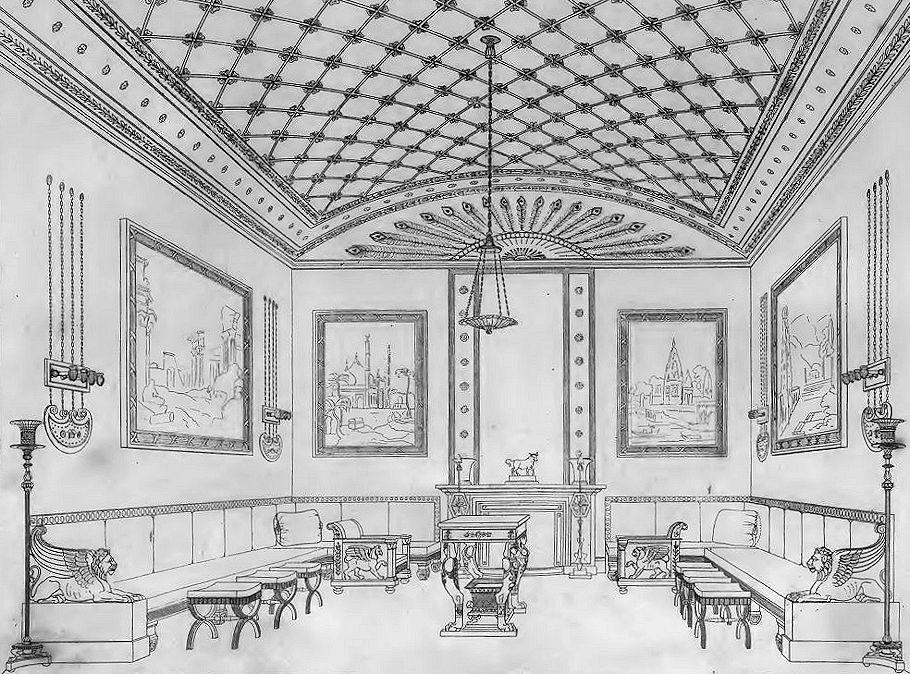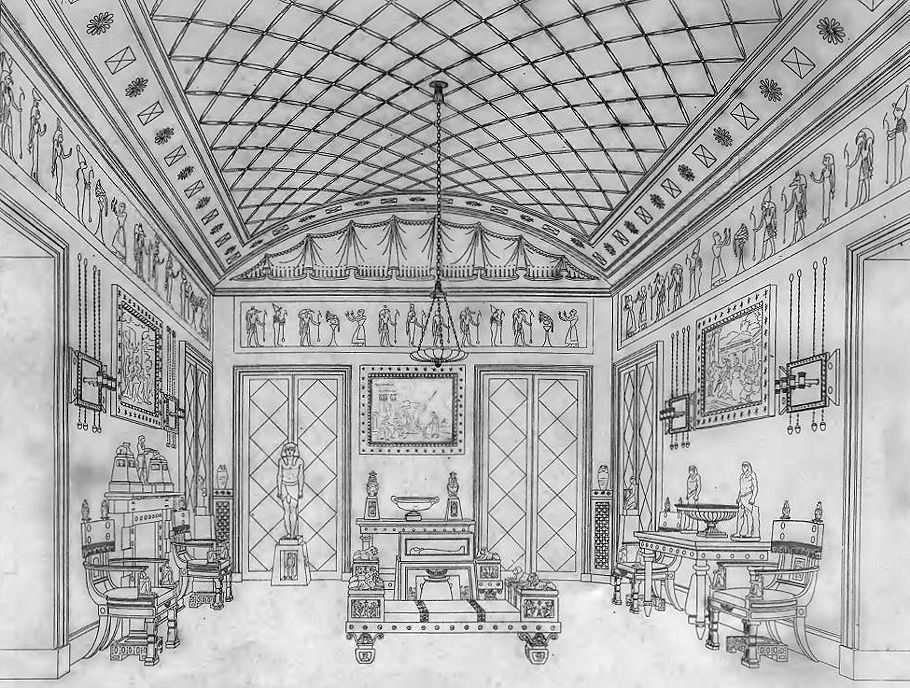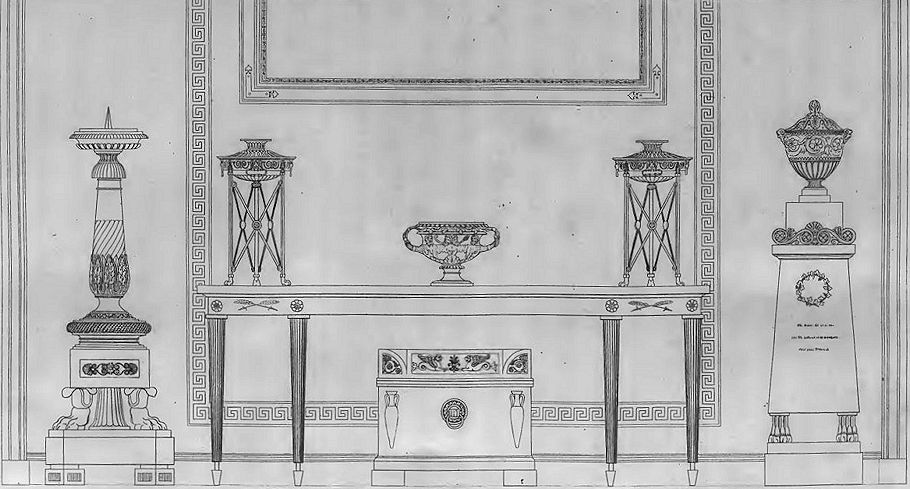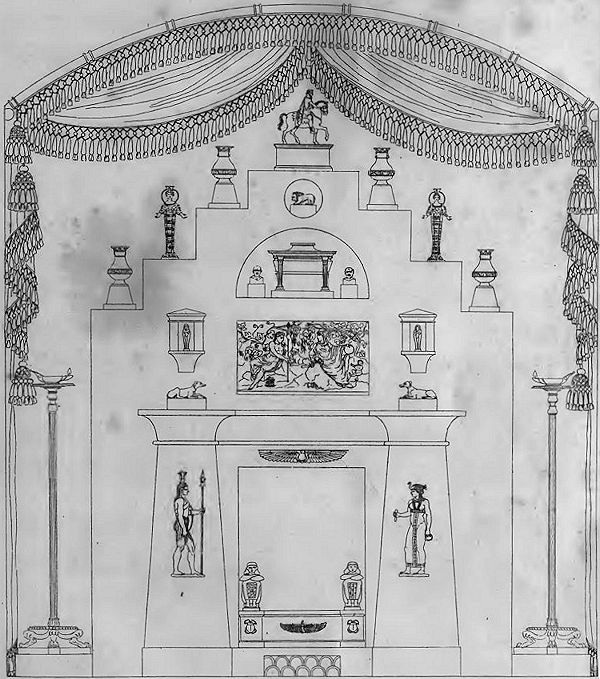Thomas Hope | Household Furniture and Interior Decoration | 1 2 |
|
|
Drawing Room. This room was principally fitted up for the reception of four large pictures, executed by Mr. daniel. and representing builf=dings in India. of Moorish architecture. Some part of the arrangement and decoration of the room were, for this reason, borrowed from the Saracenic style; though, from the unavoidable intermixture of other productions of art, of a totally different character with the pictures aforementioned, it was impossible to adhere to the Moorish style in the greater part of the detail.
|
|
|
The central object in this room is a fine marble group, executed by Mr. Flaxman, and representing Aurora visiting Cephalus on mount Ida. The whole surrounding decoration has been rendered, in some degree, analogous to these personages, and to the face of nature at the moment when the first of the two, the goddess of the morn, is supposed to announce approaching day. Round the bottom of the room still reign the emblems of night. In the rail of a black marble table are introduced medallions of the god of sleep and of the goddess of night. The bird consecrated to the latter deity perches on the pillars of a black marble chimneypiece, whose broad frieze is studded with glod stars. The sides of the room display, in satin curtains, draped in ample folds over pannels of looking-glass, and edged with black velvet, the fiery hue which fringes the clouds just before sunrise; and in a ceiling of cooler sky blue are sown, amidst a few still unextinguished luminaries of the night, the roses which the harbinger of day, in her course, spreads on every side around her.
|
|
|
Happening to possess several Egyptian antiquities, wrought in variously coloured materials, such as granite, serpentine, porphyry, and basalt, of which neither the hue nor the workmanship would have well accorded with those of my Greek statues, chiefly executed in white marble alone, I thought it best to segregate these former, and to place them in a separate room, of which the decoration should, in its character, bear some analogy to that of its contents. Accordingly, the ornaments that adorn the wall of this little canopus are, partly, taken from Egyptian scrolls of papyrus; those that embellish the ceiling, from Egyptian mummy cases; and the prevailing colors of both, as well as of the furniture, are that pale yellow and that blueish green which hold so conspiculos a rank among the Egyptian pigments; here and there relieved by masses of black and of gold.
|
|
| Sideboard adorned with emblems of Bacchus and of Ceres. Cellaret ornamented with amphorae and with figures, allusive to the liquid element. To the right, a sloping altar or pedestal, surmounted by a vase. To the left, a lofty candelabrum, destined to support a torch. On the table, a vase with Bacchanalian marks, placed between two cassolettes: over the same a picture, representing a Bacchanalian procession: the picture-frame of mahogany and gold, strengthened at the corners by metal gilt clasps. |
|
| Closet or boudoir fitted up for the reception of a few Egyptian, Hindoo, and Chinese idols and curiosities. The sides of this Lararium are formed of pillars, and the top of laths, of bamboo. Over these hangs a cotton drapery, in the form of a tent. One end of this tabernacle is open, and displays a mantle-piece in the shape of an Egyptian portico, which, by being placed against a back ground of looking glass, appears entirely insulated. On the steps of this portico are placed idols, and in its surface are inserted bas-reliefs. |
Quondam © 2014.05.10 |




